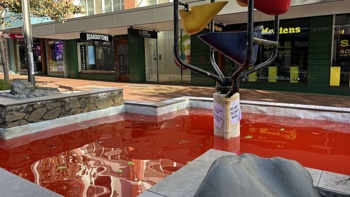A proposal to charge international visitors $200 instead of $35 has been rejected by Cabinet.
Tourism Minister Stuart Nash proposed Government increase the International Visitor Conservation and Tourism Levy in August, according to discussion documents released on October 10 by Ministry for Business, Innovation and Employment.
On August 23, cabinet declined the proposal and invited Nash to wait until late next year before revisiting the subject.
Minutes from the meeting state cabinet "invited the Minister of Tourism to revisit sustainable funding options in late 2023 in a collaborative way with the tourism industry".
New Zealand first instituted a levy in 2019 and while an increase from $35 was floated in 2021, work was halted in March.
Nash restarted the conversation last month as "the current funding model for tourism is financially and socially unsustainable".
Before Covid-19-related border closures, the $35 levy collected an estimated $80 million per year. Nash said this was "not sufficient to meet the need of our communities as well as the need to innovate for a more secure tourism future."
The recently released proposal claimed increasing the tourist levy would contribute to Government's wider goals.
"Changes to the funding system via the IVL are required to support the Government's post-Covid-19 goal of establishing a future-focused, regenerative and resilient visitor economy," it read.
Nash suggested the levy increase to $200 by July 2023, via a series of smaller hikes.
The paper admitted this would cut visitor numbers by 7 per cent and result in a further increase to the price of airfares, which are already 2-3 times higher than pre-Covid days.
However, it claimed this would be worthwhile in the long run, as income from the higher levy could fund infrastructure that produced "significant benefits to the economy over time".
During a meeting to discuss the proposal, the cabinet acknowledged there was a "funding gap" but said the primary focus was "recovery from the impacts of Covid-19".
Nash was invited to collaborate with the tourism industry and re-present in late 2023; something he has indicated he will do.
In subsequent interviews and speeches, Nash agreed that recovery was important but said he would continue the levy conversation next year.
"The most important priority for our tourism businesses now is to focus on our customers and our workers and ensure we continue to deliver world-class visitor experiences," he said during a speech to the government-funded initiative, Go with Tourism.
When they returned to the question of levies, Nash said he intended to work alongside the industry to find "mutually beneficial solutions to sustainable funding within the tourism system."
Why have a levy?
When visiting Aotearoa, international visitors may have to pay for food, accommodation, activities and the GST that comes along with all these goods and services but they also get a lot for free.
Unlike tax-paying citizens, visitors can use the local infrastructure, public services and beautiful conservation lands without paying anything in return.
However, according to Tourism Industry Aotearoa, visitors can cost local councils up to $150 million per year.
Requiring visitors to financially contribute to the costs they are in part responsible for means that less of this cost must be borne by the New Zealand taxpayer and ratepayer," said Nash's August proposal.
A tourist levy seeks to cover some of these costs.
Take your Radio, Podcasts and Music with you









